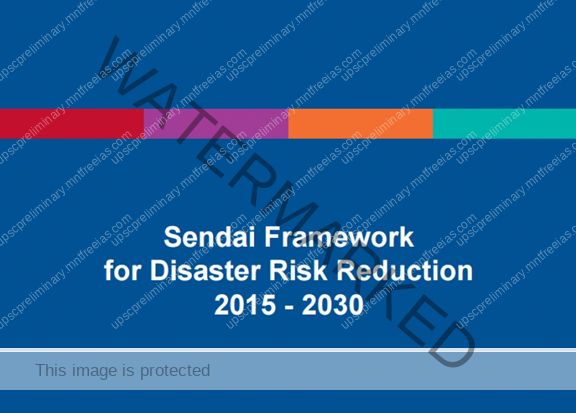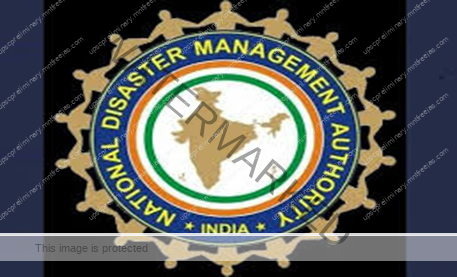- CHALLENGES IN DISASTER RISK REDUCTION
- ORGANIZATIONS RELATED TO DISASTER MANAGEMENT FRAMEWORK AT GLOBAL LEVEL
- ORGANIZATIONS AND POLICIES RELATED TO DISASTER MANAGEMENT FRAMEWORK AT NATIONAL LEVEL
- NATIONAL DISASTER MANAGEMENT AUTHORITY OF INDIA (NDMA)
- NATIONAL DISASTER MANAGEMENT PLAN (NDMP)
- STATE DISASTER MANAGEMENT AUTHORITY (SDMA)
- DISTRICT DISASTER MANAGEMENT AUTHORITY (DDMA)
UNIT 8 – DISASTER MANAGEMENT – PART 4
Challenges in Disaster Risk Reduction:
- There are insufficient levels of implementation for each monitored activity. For example, Disaster risk management plans or a risk sensitive building codes exist but they are not enforced because of a lack of government capacity or public awareness.
- There is lack of local capacities to implement disaster risk management. Weak capacity at the local levels undermines the implementation Disaster preparedness plans.
- Absence of integration of climate change into Disaster risk management plans.
- There is divergence of obtaining political and economic commitments due to other competing needs and priorities such as poverty reduction, social welfare, education etc. require greater attention and funding.
- Due to poor coordination between stakeholders, there is inadequate access with respect to risk assessment, monitoring, early warning, disaster response and other Disaster related activities.
- Insufficient investment in building disaster resilient strategies, also private sector are least contributors in the share of investment.
Organisations related to Disaster Management Framework at Global level
- In 1994 the World Conference on Natural Disaster Reduction was held in Yokohama, Japan.
The conference adopted the Yokohama strategy and declared the decade 1990-2000 as the International Decade for Natural Disaster Reduction (IDNDR).
- United Nations Office for Disaster Risk Reduction (UNISDR) is the successor to the secretariat of IDNDR and was created in 1999 to implement UN Disaster Risk Reduction strategy.
- The Hyogo Framework for Action (HFA) is a 10-year plan (2005-2015) to make the world safer from natural hazards. Priorities such as, Disaster risk reduction, identification, assessment through legal and policy frameworks, disaster preparedness and use of innovation was adopted.
- The Sendai Framework for Disaster Risk Reduction 2015-2030, is the successor instrument to the Hyogo Framework.
- It is a non-binding agreement, which the signatory nations, including India, will attempt to comply with on a voluntary basis.
- There are three international agreements within the context of the post- 2015 development agenda. These are:
- The Sendai Framework.
- Sustainable Development Goals 2015-2030
- The Paris agreement (COP 21) on Climate Change.
- These three agreements recognize the desired outcomes in Disaster Risk Reduction as a product of interconnected social and economic processes, which overlap across the agendas of the three agreements.
Sendai Framework
Organisations and Policies related to Disaster Management Framework at National level
National Disaster Management Authority of India (NDMA)
- It was established in 2005, under the Disaster Management Act 2005.
- The objective of NDMA is, to build a safer and disaster resilient India by a holistic, proactive, technology driven and sustainable development strategy.
- The NDMA is chaired by the Prime Minister of India and has a vice chairman with the status of Cabinet Minister and eight members with the status of Ministers of State.
- The NDMA Secretariat is headed by a secretary and deals with mitigation, preparedness, plans, reconstruction, community awareness and financial and administrative aspects.
National Disaster Management Plan (NDMP)
- It was released in 2016, it is the first ever national plan prepared in the country for disaster management.
- With National Disaster Management Plan (2016) India has aligned its National plan with the Sendai Framework for Disaster Risk Reduction 2015-2030, to which India is a signatory.
- The objective of the plan is to make India disaster resilient, achieve substantial disaster risk reduction. It aims to significantly decrease the losses of life, livelihoods, and assets in terms of economic, physical, social, cultural, and environmental. To maximize the ability to cope with disasters at all levels of administration as well as among communities.
State Disaster Management Authority (SDMA)
- At State level, State Disaster Management Authorities are established under Disaster Management Act 2005.
- SDMA is chaired by the Chief Minister of the State and has not more than eight members who are appointed by the Chief Minister.
- The SDMA prepares the state disaster management plan and implements the National Disaster Management Plan.
District Disaster Management Authority (DDMA)
- Under Disaster Management Act 2005, every State government shall establish a DDMA for every district in the State.
- The DDM Authority shall consist of:
- Chairperson – the Collector or District Magistrate or Deputy Commissioner act as Chairperson of DDMA.
- Co-Chairperson – is the elected representative of the local authority. In the Tribal Areas, the Chief Executive Member of the district council of autonomous district is the co-chairperson.
- There are not more than seven other members in DDMA.
- The Disaster Management Committee governed under District Magistrate will formulate village level disaster management plans for concern villages.
- The DDMA makes District Disaster Management Plan and implements the state Disaster Management Plan.



[pvc_stats postid="" increase="0" show_views_today="1"]
